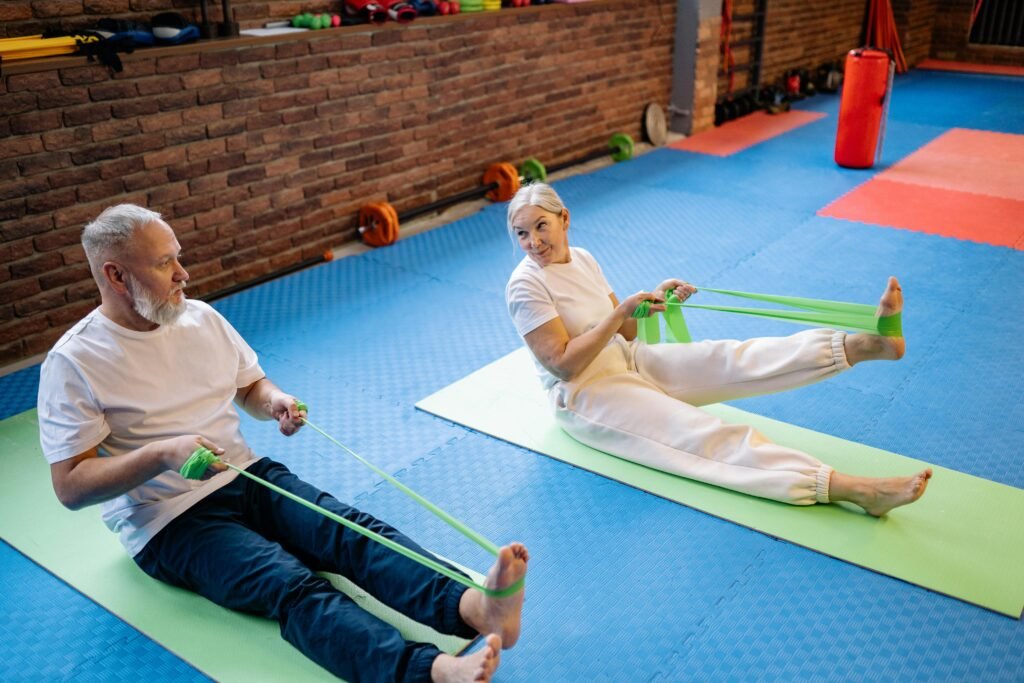As we all know, doing a proper amount of aerobic exercise is beneficial to health, and many people adhere to aerobic exercise in daily life. However, some people say that doing too much aerobic exercise can accelerate aging. Is this true? Today, let’s talk about the benefits and drawbacks of aerobic exercise.

01 What is Aerobic Exercise
Aerobic exercise refers to physical exercise carried out under sufficient oxygen supply. Simply put, aerobic exercise refers to any rhythmic movement. The standard is heart rate, which is heartbeat. An aerobic exercise has a heart rate maintained at 140 – 150 beats per minute. At this time, the blood can supply the myocardium with enough oxygen. The characteristics of aerobic exercise are low intensity, rhythmic, long – lasting, and the requirement is that each exercise session lasts no less than 30 minutes, and it should be adhered to 3 – 5 times a week.

02 Energy Consumption in Aerobic Exercise
Firstly, let’s talk about the energy consumption situation in the human body during aerobic exercise. In the first 15 minutes of aerobic exercise, carbohydrates are mainly consumed for energy. At this time, the proportion of fat – based energy supply is low, and the speed of muscle protein breakdown for energy supply can almost be ignored. But after about 30 minutes of aerobic exercise, the proportion of fat – based energy supply is already relatively high. After 40 – 60 minutes, the proportion of protein breakdown also gradually increases. In this case, aerobic exercise has almost exhausted the available sugar and mobilized a lot of fat, but still cannot meet the energy supply, so proteins have to continue to break down for energy supply. Some people who want to lose weight not only control their diet but also increase their exercise volume to achieve their goals faster. Some people who pursue sports performance will also undergo a lot of training to achieve their goals as soon as possible.

03 Findings of Medical Research
Medical research has found that strenuous exercise can enhance metabolism, accelerate cell division, replace those gradually aging cells, and keep the body in a vigorous state. Telomeres are short multi – repeated non – transcribed sequences (TTAGGG) and some binding proteins forming special structures. Besides providing buffers for non – transcribed DNA, they can also protect the ends of chromosomes from fusion and degradation. They play an important role in chromosome positioning, replication, protection, and controlling cell growth and life span, and are closely related to cell apoptosis, cell transformation, and immortalization. When cells divide once, the telomeres of each chromosome become shorter each time, and about 50 – 200 nucleotides of the telomere part cannot be completely replicated (lost) due to multiple cell divisions, so the cells terminate their functions and stop dividing. Therefore, severely shortened telomeres are signals of cellular aging. The famous immunology professor at Houston Baylor Medical College provided a more in – depth analysis of this principle in her report on cell molecular division. She mentioned in a speech at Harvard University that athletes, in order to maintain a high competitive level, always try to keep their bodies in the best condition. Continuous exercise makes the survival time of body cells short, and they are quickly replaced by new cells. New cells are strong and energetic, so they temporarily feel excited and strong. However, this excessive consumption comes at a cost. Their immune system decreases due to excessively high metabolism, and their lifespan may also be shortened accordingly. Therefore, we often find that some young athletes appear more mature than their actual age, which is caused by excessive intensive training leading to human aging.

04 Harms of Excessive Aerobic Exercise
- Accelerate brain aging: High – intensity exercise can damage the brain. The depletion of energy substances ATP (adenosine triphosphate) during exercise may be the main reason for the decline of central nervous function; the redistribution of body blood, the accumulation of a large number of free radicals, and the vascular endothelial damage caused by accelerated blood flow reduce the blood and oxygen supply to the brain. The accumulation of local acidic products not only affects the brain’s energy supply but also directly curbs neural activity, causing a decline in brain function.
- Accelerate tissue function decline: When the human body engages in a large amount of exercise, it inhibits the function of the pituitary gland, leading to obstacles in hormone secretion, making the body overly tired and poorly recovered inside. More intense exercise will aggravate the wear and tear on the body organs, resulting in the decline of tissue function within the body.
- Accelerate joint degeneration: Excessive aerobic exercise increases the number of collisions at the joint parts, causing wear between joints, accelerating joint degeneration.
However, moderate aerobic exercise can promote metabolism, improve respiratory function, and help delay aging. It can play a certain role in strengthening the body and helping burn fat in the body.

05 Benefits of Aerobic Exercise
- Aerobic exercise can increase the body’s oxygen consumption and promote metabolism. Studies have found that long – term high – relative – intensity aerobic exercise can increase the maximum aerobic capacity by 25%, which is equivalent to increasing by 6 milliliters, equal to reducing 10 to 12 years of physiological age.
- Improve respiratory function. Exercise can effectively increase lung capacity and promote the enhancement of lung function. Good respiratory function helps the body maintain vigorous energy and delay the aging process of the body.
- Improve the function of the nervous system. Movement is a coordinated activity under the control of the nervous system. People who persist in exercise for a long time are more flexible in their bodies, have sharp hearing and sight, and are full of energy. Exercise can promote cerebral blood circulation, improve the oxygen and nutrient supply to brain cells, and delay the aging process of the central nervous system.
- Promote muscle development and bone strengthening. Correct exercise can improve the contraction and relaxation ability of muscles, make muscle fibers thicker, enhance muscle strength, strengthen the material metabolism of bones, increase the elasticity and toughness of bones, thus delaying the aging process of bones. And it can prevent osteoporosis, osteoarthritis, joint pain and other symptoms. Therefore, in life, we can do some aerobic exercise appropriately. As long as we grasp the intensity of exercise well, the body will benefit.




